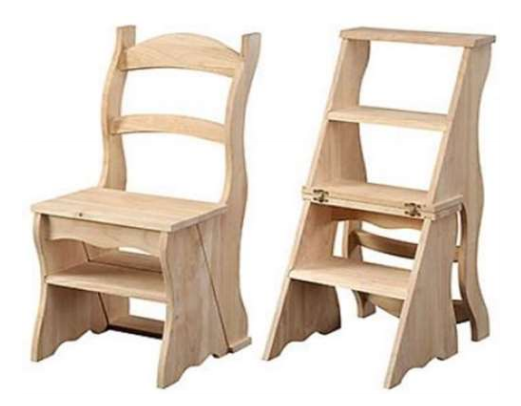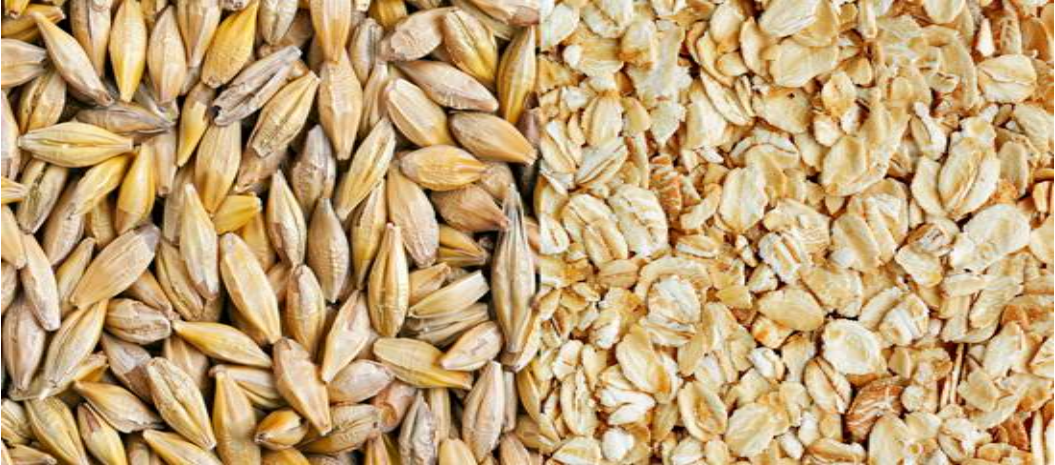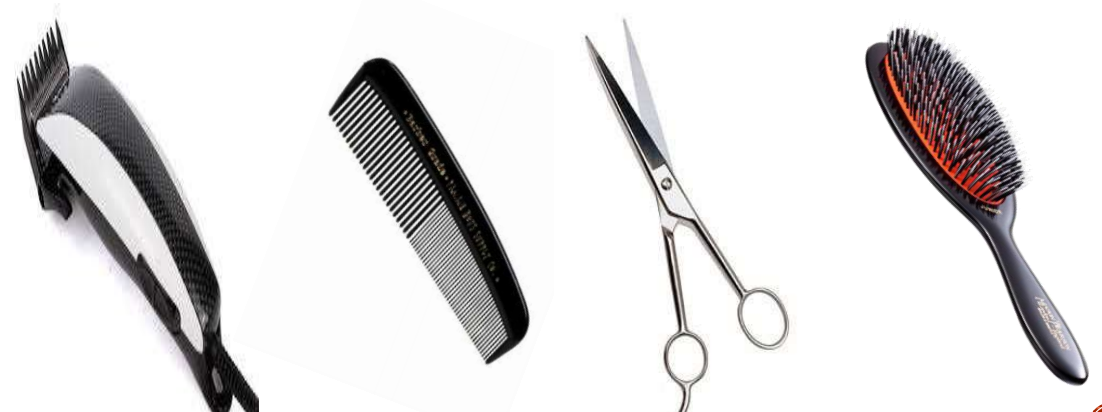Table of Contents
Rule 3 “two or more headings”
WHEN, BY APPLICATION OF RULE 2(b) OR FOR ANY
OTHER REASON, GOODS ARE, PRIMA FACIE, CLASSIFIABLE
UNDER TWO OR MORE HEADINGS, CLASSIFICATION SHALL BE
EFFECTED AS FOLLOWS:
GRI 3 provides for the classification of goods that are prima facie (or when initially
considered) classifiable under two or more headings. In such instances, the goods are
classified pursuant to this rule based on three criteria, taken in order:
EXPLANATORY NOTE for RULE 3
(I) This Rule provides three methods of classifying goods which, prima facie,
fall under two or more headings, either under the terms of Rule 2 (b) or for
any other reason.
These methods operate in the order in which they are set out in the Rule.
Thus Rule 3 (b) operates only if Rule 3 (a) fails in classification, and if both Rules 3 (a)
and (b) fail, Rule 3 (c) will apply. The order of priority is, therefore (a) specific description; (b) essential character; (c) heading which occurs last in numerical order.
(II) The Rule can only take effect provided the terms of headings or Section or
Chapter Notes do not otherwise require. For instance, Note 4 (B) to Chapter 97
requires that goods covered both by the description in one of the headings 97.01 to
97.05 and by the description in heading 97.06 shall be classified in one of the former headings. Such goods are to be classified according to Note 4 (B) to Chapter 97 and not according to this Rule.
Rule 3 (a) Most specific
The heading which provides the most specific description
shall be preferred to headings providing a more general
description. However, when two or more headings each refer
to part only of the materials or substances contained in mixed
or composite goods or to part only of the items in a set put up
for retail sale, those headings are to be regarded as equally
specific in relation to those goods, even if one of them gives a
more complete or precise description of the goods.
The first sentence to GRI 3 (a) provides that goods should be classified in the heading
that provides the most specific description. In general, under this criterion, (1) a
description by name is more specific than a description by class and (2) a description
that more clearly identifies a product is more specific than one which is less complete.
Example1: Chair/ladder
A wooden ladder is classified as “Other articles of wood(HS4421)”
A wooden chair is classified as “Wooden chair(HS9401)”
So where to be classified??

Retrieved from: HARMONIZED COMMODITY DESCRIPTION and CODING SYSTEM or HARMONIZED SYSTEM(HS)
Relative Specificity
A description by name is more specific than a description by class.
A description that more clearly identifies a product is more specific than one which is less complete.
the name “Wooden chair” more clearly identifies than “Other articles of wood”
Therefore this product is classified as Wooden chair(HS9401)
Example2:
Steel spoon is classified in HS82.15(Spoons) and not in HS73.23(Steel Household)
Example3:
Seats for motor vehicles are classified in HS94.01(Seats for motor vehicles)
and not in HS 87.08(Parts and accessories of the motor vehicles)
Example4: An example of a description by name in one heading that is
more specific than a description by class in another heading is as follow:
“shavers and hair clippers with self-contained electric motor” of heading
8510 is more specific than “electro-mechanical tools for working in the
hand with self-contained electric motor” of heading 8467 or
“electromechanical domestic appliances with self-contained electric motor” of
heading 8509.
Example5: An example of a description in one heading that more clearly
identifies a product than a description in another heading (and thus the
first description is more specific than the second description) is as follows:
A product identified as “unframed safety glass made of toughened or
laminated glass that is shaped and identifiable for use in airplanes” is
more clearly described by the article description “safety glass” of heading
7007 than by the article description “parts of goods of heading 8801 or
8802” (parts of aircraft and spacecraft) of heading 8803.
The second sentence to GRI 3 (a) further provides that when two or more headings
each refer to only one of the materials or substances in mixed or composite goods, or to
only some of the articles included in a set put up for retail sale, those headings are to be
regarded as equally specific in relation to those goods, even if one of them gives a more
complete or precise description of the goods. If this situation exists, then resort must be
made to GRI 3 (b). (See examples discussed below for GRI 3 (b).)
EXPLANATORY NOTE for RULE 3(a)
(III) The first method of classification is provided in Rule 3 (a), under which
the heading which provides the most specific description of the goods is to
be preferred to a heading which provides a more general description.
(IV) It is not practicable to lay down hard and fast rules by which to determine
whether one heading more specifically describes the goods than another,
but in general it may be said that :
(a) A description by name is more specific than a description by class
(e.g., shavers and hair clippers, with a self-contained electric motor, are
classified in heading 85.10 and not in heading 84.67 as tools for working
in the hand with self-contained electric motor or in beading 85.09 as
electro-mechanical domestic appliances with self-contained electric motor).
(b)If the goods answer to a description which more clearly identifies them,
that description is more specific than one where identification is less complete.
Examples of the latter category of goods are :
(1) Tufted textile carpets, identifiable for use in motor cars,
which are to be classified not as accessories of motor cars
in heading 87.08 but in heading 57.03, where they are more
specifically described as carpets.
(2) Unframed safety glass consisting of a toughened or laminated
glass, shaped and identifiable for use in aeroplanes, which is to be
classified not in heading 88.03 as parts of goods of heading 88.01
or 88.02 but in heading 70.07, where it is more specifically described
as safety glass.
(V) However, when two or more headings each refer to part only of the materials or
substances contained in mixed or composite goods or to part only of the items in a
set put up for retail sale, those headings are to be regarded as equally specific in
relation to those goods, even if one of them gives a more complete or precise
description than the others.
In such cases, the classification of the goods shall be determined by rule 3 (b) or 3 (c).
Rule 3 (b) Essential character
Mixtures, composite goods consisting of different
materials or made up of different components, and
goods put up in sets for retail sale, which cannot be
classified by reference to 3 (a), shall be classified as if
they consisted of the material or component which
gives them their essential character, insofar as this
criterion is applicable.
GRI 3 (b) deals with mixed goods, composite goods, and goods put up in sets for retail
sale as described above in the second sentence to GRI 3 (a) (i.e., each of the goods is
potentially classifiable in more than one heading because each good consists of two or
more different ingredients, materials, components or articles and no heading provides
for the goods as a whole).
By application of this criterion, such goods are classified according to the ingredient,
material, component or article that gives the mixtures, composite goods, or sets their
“essential character.”
Goods Put up in Sets for Retail Sale. For the purposes of GRI 3 (b), the term “goods put
up in sets for retail sale” means that the goods under consideration must (a) consist of
at least two different articles (i.e., the articles must be of a different type or nature, e.g.,
two table spoons are not such a “set”) which are, prima facie, classifiable in different
headings; (b) consist of products or articles put up together to meet a particular need or
carry out a specific activity; and (c) are put up in a manner suitable for sale directly to
users without repacking.
Example1:Mixture of barley (60%) of HS10.03 and oats (40%) of HS10.04
 Retrieved from: HARMONIZED COMMODITY DESCRIPTION and CODING SYSTEM or HARMONIZED SYSTEM(HS)
Retrieved from: HARMONIZED COMMODITY DESCRIPTION and CODING SYSTEM or HARMONIZED SYSTEM(HS)
An example of a mixture of barley of HS1003(60%) and oats of HS1004(40%) in
different amounts. In such an instance, “barley” gives their essential character.
Therefore the mixture is classified as “barley(HS1003)”
Example2: An example of a “composite good”
coming within the purview of GRI 3 (b) would be a combined flashlight of
heading 8513 and radio of heading 8527 (i.e., both are contained in the
same housing). In such an instance, there is a product consisting of two
or more different units or components that are located in the same
housing with each component having a provision in which it could
potentially be classified and no provision exists in the Harmonized System
that provides for the composite good as a whole.
Example3: An example of a “set” coming within the purview of GRI 3
(b) would be a hairdressing kit consisting of a pair of electric hair clippers
of heading 8510, a comb of heading 9615, a pair of scissors of heading
8213, and a brush of heading 9603. In such an instance, there is a
product that consists of more than one item or article with each article
having a provision in which it could potentially be classified and no
provision exists in the Harmonized System that provides for the set as a
whole. In the above-mentioned hairdressing kit, the articles are put up
together to meet the particular need or carry out the specific activity of
grooming hair.

Retrieved from: HARMONIZED COMMODITY DESCRIPTION and CODING SYSTEM or HARMONIZED SYSTEM(HS)
Example4: A mixture for brewing, consisting of 70 % wheat and 30 % barley. The mixture is
classified in Heading 10.01 (Wheat and meslin).
Example5: Liquor-filled chocolates are classified in Heading 18.06 (Chocolate and other food
preparations containing cocoa).
Example6: A bed linen set comprising a woven bedspread, pillow-cases and bolsters put up in a
paperboard case. It is classified in Heading 63.04.
EXPLANATORY NOTE for RULE 3(b)
(VI) This second method relates only to :
(i) Mixtures.
(ii) Composite goods consisting of different materials.
(iii) Composite goods consisting of different components.
(iv) Goods put up in sets for retail sales.
It applies only if Rule 3 (a) fails.
(VII) In all these cases the goods are to be classified as if they consisted of the
material or component which gives them their essential character, insofar as
this criterion is applicable.
(VIII) The factor which determines essential character will vary as between
different kinds of goods. It may, for example, be determined by the nature of
the material or component, its bulk, quantity, weight or value, or by the role
of a constituent material in relation to the use of the goods.
(IX)For the purposes of this Rule, composite goods made up of different components
shall be taken to mean not only those in which the components are attached to
each other to form a practically inseparable whole but also those with separable components, provided these components are adapted one to the other and are
mutually complementary and that together they form a whole which would not
normally be offered for sale in separate parts.
Examples of the latter category of goods are :
(1) Ashtrays consisting of a stand incorporating a removable ash bowl.
(2) Household spice racks consisting of a specially designed frame
(usually of wood) and an appropriate number of empty spice jars of
suitable shape and size.
As a general rule, the components of these composite goods are put
up in a common packing.
(X) For the purposes of this Rule, the term “goods put up in sets for retail sale”
shall be taken to mean goods which :
(a) consist of at least two different articles which are, prima facie, classifiable
in different headings. Therefore, for example, six fondue forks cannot be
regarded as a set within the meaning of this Rule;
(b) consist of products or articles put up together to meet a particular need or
carry out a specific activity; and
(c) are put up in a manner suitable for sale directly to users without repacking
(e.g., in boxes or cases or on boards). The term therefore covers sets consisting,
for example, of different foodstuffs intended to be used together in the
preparation of a ready-to-eat dish or meal. Examples of sets which can be
classified by reference to Rule 3 (b) are :
(1)
(a) Sets consisting of a sandwich made of beef, with or without cheese,
in a bun (heading 16.02), packaged with potato chips (French fries)
(heading 20.04) : Classification in heading 16.02.
(b)Sets, the components of which are intended to be used together in the
(reparation of a spaghetti meal, consisting of a packet of uncooked
spaghetti heading 19.02), a sachet of grated cheese (heading 04.06) and
a small tin of tomato sauce (heading 21.03), put up in a carton :
Classification in heading 19.02.
The Rule does not, however, cover selections of products put up together
and consisting, for example, of:
a can of shrimps (heading 16.05), a can of pâté de foie (heading 16.02),
a can of cheese (heading 04.06), a can of sliced bacon (heading 16.02),
and a can of cocktail sausages (heading 16.01); or
a bottle of spirits of heading 22.08 and a bottle of wine of heading 22.04.
In the case of these two examples and similar selections of products,
each item is to be classified separately in its own appropriate heading.
(2) Hairdressing sets consisting of a pair of electric hair clippers (heading 85.10),
a comb (heading 96.15), a pair of scissors (heading 82.13), a brush
(heading 96.03) and a towel of textile material (heading 63.02), put up in a leather
case (heading 42.02) : Classification in heading 85.10.
(3)Drawing kits comprising a ruler (heading 90.17), a disc calculator
(heading 90.17), a drawing compass (heading 90.17), a pencil (heading
96.09) and a pencil-sharpener (heading 82.14), put up m a case of
plastic sheeting (heading 42.02):
Classification in heading 90.17.
For the sets mentioned above, the classification is made according to the
component, or components taken together, which can be regarded as
conferring on the set as a whole its essential character.
(XI)This Rule does not apply to goods consisting of separately packed constituents
put up together, whether or not in a common packing, in fixed proportions for the
industrial manufacture of, for example, beverages.
Rule 3 (c) Last in numerical order
WHEN GOODS CANNOT BE CLASSIFIED BY REFERENCE TO
3(a) OR 3(b), THEY SHALL BE CLASSIFIED UNDER THE HEADING
WHICH OCCURS LAST IN NUMERICAL ORDER AMONG THOSE
WHICH EQUALLY MERIT CONSIDERATION.
GRI 3 (c) states that goods should be classified under the heading that occurs last in
numerical order from among those that equally merit consideration if the goods cannot
be classified by reference to GRIs 3 (a) or 3 (b).
EXAMPLE1:

In the above-mentioned example of the mixed good consisting of barley
and oats in equal amounts, if neither the barley nor the oats is found to
impart the essential character to the product, then by application of GRI 3
(c) the product would be classified in heading 1004 as if consisting solely
of the oats. This is because the heading number for the oats found in the
mixture occurs last in numerical order as between it and the barley (i.e.,
1003 for the barley and 1004 for the oats).
EXAMPLE2: A belt made of 50 % leather(heading42.03) and
50 % textiles(heading62.17) is classified in Heading 62.17.
EXAMPLE3: A machine-tool for working stone(heading 84.64) as well as
wood(heading 84.65) is classified in Heading 84.65.
EXAMPLE4: Electric lamp (heading 94.05) with an alarm clock (heading 91.05)
is classified in 94.05.
EXAMPLE5: Chandeliers (heading 94.05) with electric fan (heading 84.14)
is classified in 94.05.
WHAT IS THE ESSENTIAL CHARACTER OF A PRODUCT?
The term “essential character,” as used in the GRIs, is not defined in the Harmonized
System. As concerns that term, however, it is stated in the Explanatory Notes to the
Harmonized System (which is an extrinsic interpretative aid to the Harmonized System
that is discussed below) that the factor that determines the essential character of a good
will vary as between different kinds of goods (i.e., essential character must be
determined on a case-by-case basis). The essential character of a good, may, for
example, be determined by the nature of the material or component, its bulk, quality,
weight or value, or by the role of a constituent material in relation to the use of the
goods. Other factors may be considered in determining the essential character of a
product.
EXPLANATORY NOTE for RULE 3(c)
(XII) When goods cannot be classified by reference to Rule 3 (a) or 3 (b), they are to be classified in the heading which occurs last in numerical order among those which
equally merit consideration in determining their classification.
